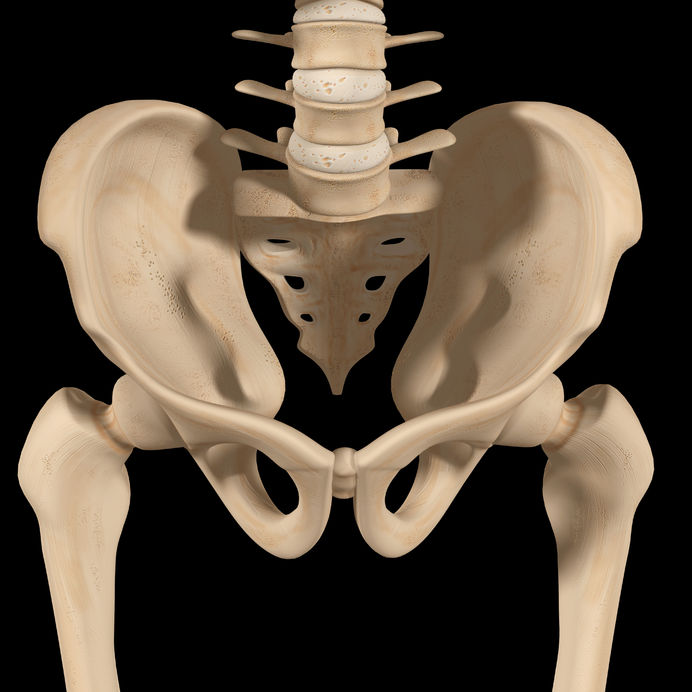Developing a mild pelvic imbalance or having a slight fracture in the pelvis may heal on its own, and not require surgery or much attention. However, developing a severe pelvic imbalance or getting into an accident and suffering a serious fracture could not only lead to chronic pain, but could be life-threatening.
Therefore, it is worth understanding pelvic structure, function, and how an occupational therapist, physiotherapist, and kinesiologist can help alleviate pelvic imbalance or help you recover from a pelvic fracture.
The Pelvis: A Brief Overview
The pelvis is a large bony structure, located between the abdomen and the thighs which connect the spine to the lower limbs through the hip muscles. While the iliopsoas group, the set of muscles of the hip, connect with the spine and upper body, other complex muscles of the pelvis include the gluteal muscles and thigh muscles, and coordinate the movement of our legs.
The primary function of the pelvis is to bear the weight of the upper body while sitting, standing, and moving. Women, relative to their size, have a larger and wider pelvis than men, due to adaptation for childbirth.
Pelvic Imbalance/Tilt
Pelvic imbalance or pelvic tilt can be caused by a discrepancy between leg length, lack of strength/poor flexibility/lower muscle endurance, abnormal posture, flat feet, inadequate footwear, or foot problems.
Having a pelvic imbalance/tilt will result in joint misalignment, lower back misalignment, muscular imbalances, abnormal posture, and can lead to hip pain and lower back pain.
Pelvic imbalance/tilt should be corrected as soon as possible because it may cause degenerative changes to spinal structures, disc herniation, and sciatica. Diagnosing a misaligned pelvis should be done by a medical professional, but common symptoms are back pain, groin pain, and stiffness and tightness in these areas.
Pelvic Fractures
The symptoms associated with a pelvic fracture are similar to pelvic imbalances, though depending on the severity of the fracture, symptoms can be much more significant.
A pelvic fracture is the disruption of the hip bone, sacrum, and coccyx. Common causes of fractures include falls, motor vehicle accidents, and high-speed or intensity sports injuries. Diagnoses should be done by a medical professional, but common symptoms include groin pain, hip and lower back pain, abdominal pain, and numbness or tingling in the groin or legs.
Consulting Specialists for Pelvic Injuries
Several specialists can help improve pelvic imbalance or help an individual recover from a pelvic fracture. Consulting an occupational therapist regarding one’s daily routine can be the first step.
Often times pelvic imbalance develops through the type of daily activities an individual engages and the type of footwear they use. Poor posture while sitting, walking, and during bending and lifting can lead to pelvic imbalances. An occupational therapist can help by identifying areas in the home, school, and the work environment that are contributing to a pelvic imbalance, and provide recommendations for specialized equipment and aids to alleviate poor posture.
Consulting with a physiotherapist and kinesiologist can also help. A physiotherapist can help identify areas of flexibility, strength, and movement patterns that can be improved upon to relieve pelvic tilt. They can also identify inadequate footwear, and discuss alternative solutions.
A kinesiologist can provide core, gluteal, and hamstring exercises in order to strengthen weaker muscles that are contributing to pelvic tilt. A kinesiologist can also help increase flexibility through mobility exercises that will translate into improved posture during sitting and while walking.
The muscles of our pelvis are complex structures that allow us to be mobile and enjoy all of the amazing activities in life, from sitting comfortably to running a marathon. Correcting pelvic imbalance or properly recovering from a hip fracture is crucial to all of the activities of life, and therefore consulting with an occupational therapist, physiotherapist, and kinesiologist after a pelvic injury is a great approach to recovery.

